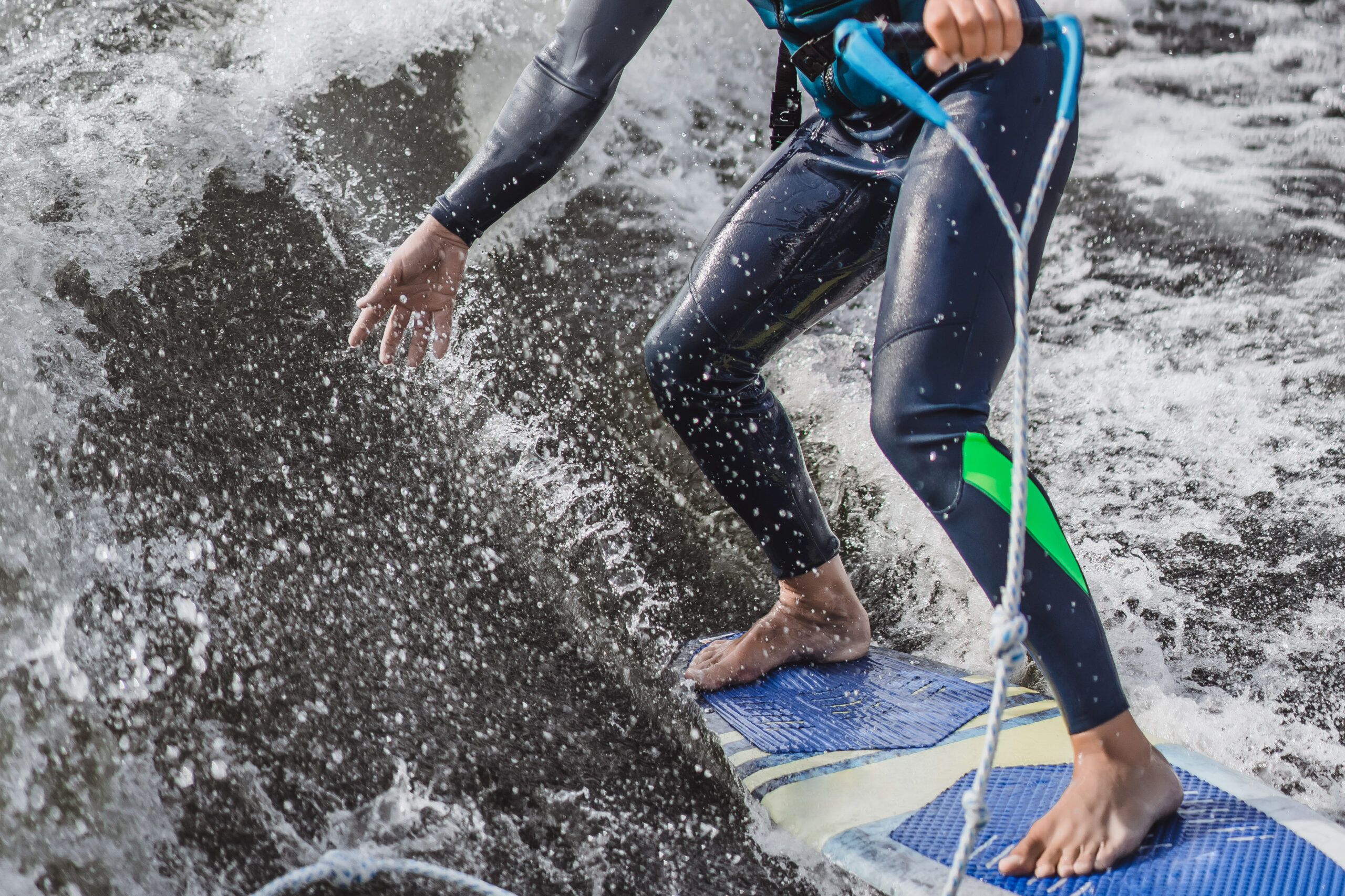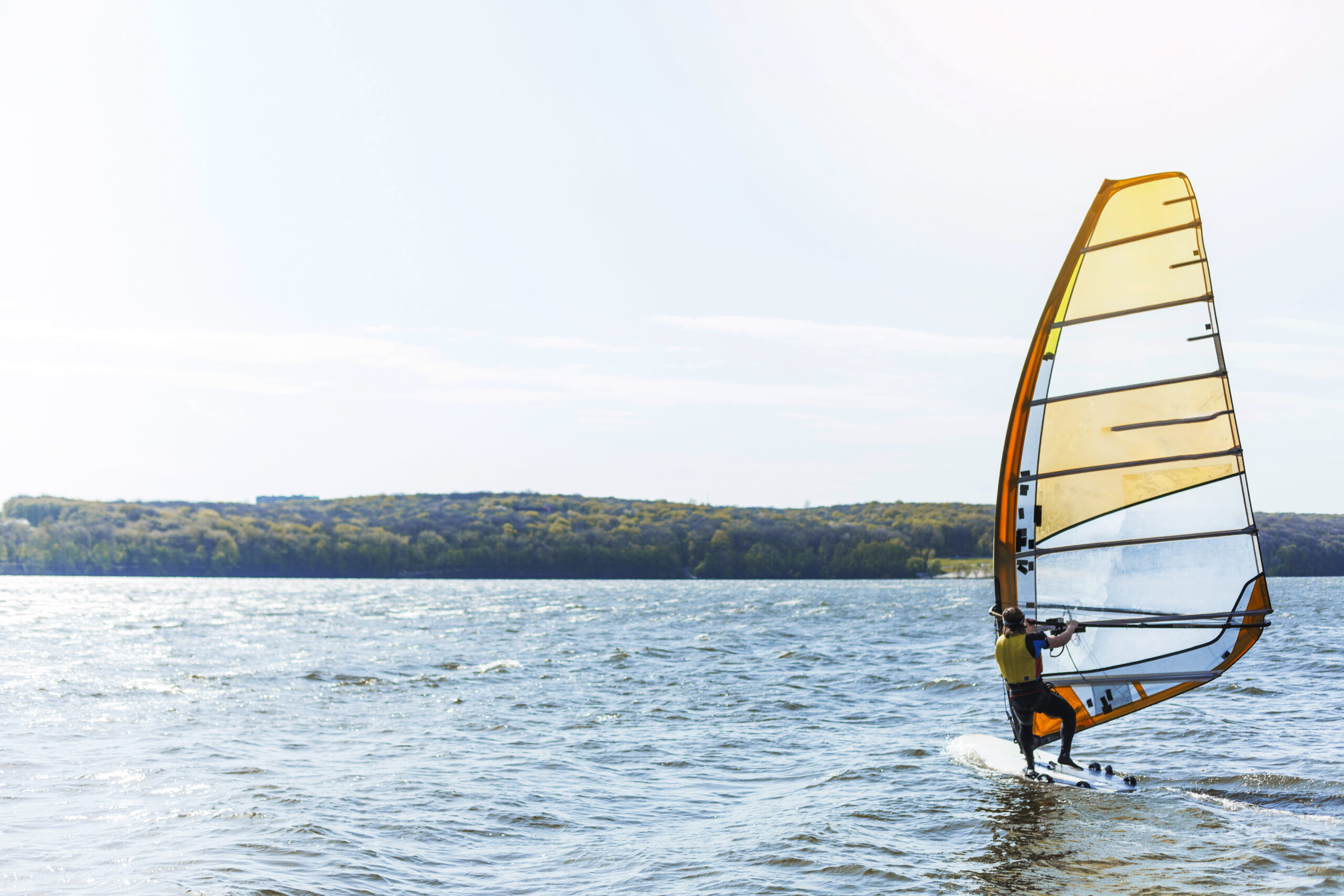Windsurfing, also known as sailboarding, is a surface water sport that combines elements of surfing and sailing. Participants stand on a board and use a sail connected to a boom to harness the power of the wind to propel themselves across the water. Windsurfing has grown from its humble beginnings in the 1960s to a global sport with mass appeal.
A Brief History
The origins of windsurfing can be traced back to the mid 1900s. In 1948, American Newman Darby created a primitive sailboard which he patented as the “sailboard.” However, it was not until the 1960s that the sport started gaining popularity. In 1964, sailor Peter Chilvers combined a surfboard and sail and used it to windsurf across the English Channel. This demonstration sparked interest in the fledgling sport.
Windsurfing saw major innovations in the 1970s, thanks to contributions from enthusiasts Jim Drake and Hoyle Schweitzer. They created the universal joint, which allowed the sail to be steered independently of the board. This key development marked the birth of the maneuverable windsurfing rigs we know today. Schweitzer also founded the company Windsurfing International, which helped popularize and commercialize the sport.
By the mid 1970s, windsurfing’s popularity was soaring, as people embraced it as an exciting new alternative water sport. Over the next decades, advances in gear and competition fuelled windsurfing’s rapid spread across the globe.
Equipment Needed
Windsurfing requires a specific set of equipment to get started. The basic components are:
| Basic Windsurfing Equipment | Description |
|---|---|
| Board | Resembles a surfboard, but larger and heavier to mount a mast |
| Sail | Captures wind to generate power. Varying sizes for different conditions |
| Mast | Vertical spar that connects sail to board. Breaks down into two pieces. |
| Boom | Horizontal bar attaching to mast that controls sail angle |
| Universal Joint | Pivoting joint that enables sail to move independently of board |
| Footstraps | Straps that keep feet anchored to the board |
| Leash | Tethers rider to board to prevent loss after falls |
| Wetsuit | Provides insulation and buoyancy in cool water |
| Lifejacket | Optional but recommended for beginner safety |
Proper setup of the equipment is key to an optimal windsurfing experience. Special care should be taken to orient the sail and rigging to balance and stabilize the board.
Learning the Basic Techniques
Windsurfing requires coordination to simultaneously balance on the board and control the sail. With practice, you can learn how to harness the wind to achieve momentum, change direction and stay upright. Here are some of the fundamental windsurfing techniques to master:
- Board balance: Standing upright on the board is the first skill to develop. Beginners should aim to find their center of balance to avoid tipping into the water. Keeping knees bent can help stabilize the body.
- Upwind sailing: Sailing upwind, against the wind, will be one of your main goals. This is done by angling the sail to capture the wind and generate forward motion, while zig-zagging at angles to your destination.
- Tacking: Tacking refers to the maneuver of switching the sail from one side of the board to the other while sailing upwind. Pivoting your body and sail in a smooth motion is the goal.
- Jibing: Jibing, or gybing, lets you change directions while sailing downwind. You turn the sail quickly from one side to the other to catch the wind on the new side.
- Harnessing wind power: Learning to use your body as a counterbalance and correctly trimming the sail helps maximize your speed. Weight positioning and sailing at appropriate angles are key.
Don’t be discouraged if you spend more time in the water than on the board as you build proficiency. With practice, you will develop the balance, coordination and feel to ride the winds.
Types of Windsurfing
Once you have the basics down, you can explore different facets of the sport. Here are some of the main styles and disciplines:
- Wave sailing: As the name suggests, this involves windsurfing on waves, combining elements of surfing. Wave sailing spots offer large swells to ride.
- Freestyle sailing: This discipline focuses on performing acrobatic tricks and jumps. Competitors are judged on their technical moves and complexity.
- Speed sailing: Racers aim to achieve the highest possible speeds on the open waters. Special speed sailboards help top windsurfers exceed speeds over 60 mph.
- Slalom racing: These fast-paced races require quick reflexes to maneuver around buoys along a course. Speed and agility are tested.
- Long distance racing: Endurance is the name of the game in long distance races which can be over 50 nautical miles. Tactics and physical fitness are vital.
The diversity of windsurfing offers exciting challenges for enthusiasts of all levels to continually test and improve their abilities on the water.
To sum up, windsurfing allows you to harness the power of the wind for an exhilarating ride across the water. The origins of this multifaceted watersport trace back decades but its popularity continues to grow. While learning to balance on a board and control the sail takes dedication, the payoff in thrill and skills makes it worthwhile. With key equipment, basic techniques and a learning mindset, windsurfing’s joys can be accessible to almost anyone. Even as you master the fundamentals, windsurfing offers endless opportunities to advance your skills and seek new challenges and adventures out on the waters.



0 Comments